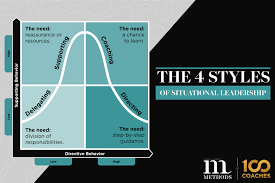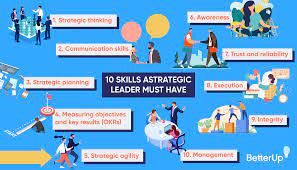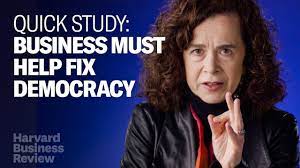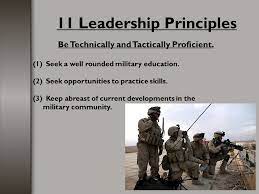The 3 Main Types of Situational Leadership
There are three main types of situational leadership: directive, supportive, and participative. Directive leadership is when the leader tells the group what to do and how to do it. Supportive leadership is when the leader provides emotional support and encouragement to the group. Participative leadership is when the leader involves the group in decision-making and problem-solving. Each type of situational leadership has its own advantages and disadvantages.
Directive leadership can be very effective in situations where there is a clear goal and a need for quick action. However, it can also be seen as bossy or overbearing, and may not work well in all situations. Supportive leadership is often seen as more caring and compassionate, but may not be as effective in getting things done quickly or efficiently. Participative leadership can build team morale and unity, but may take longer to get things done due to having to consult with the group first. Ultimately, the best type of situational leadership will depend on the specific situation and what is most likely to achieve the desired outcome.
situational leadership model
The Situational Leadership Model is a framework that helps leaders adapt their style to the developmental level of the people they are leading. The model has been around since the 1970s, and has been used extensively in leadership development programs.
The model is based on the idea that there is no one best way to lead, and that the best way to lead depends on the situation. The leader must adapt their style to fit the situation. The model describes four different leader styles, based on the task and relationship orientation of the leader:
1. Directing – The leader tells people what to do and how to do it. This style is appropriate when there is little time for discussion, or when people are not sure what needs to be done.
2. Coaching – The leader provides guidance and support, but gives people some freedom to figure out how to do things for themselves. This style is appropriate when people need some direction, but also need some time to learn and grow into their roles.
3. Supporting – The leader provides encouragement and moral support, but leaves most of the decision-making up to the team. This style is appropriate when the team is confident and capable, but needs some motivation to keep going.
4. Delegating – The leader allows others to take on responsibility and make decisions. This style is appropriate when the team is ready and able to work independently.
The Situational Leadership Model can be a helpful tool for
The three main types of Situational Leadership are:
Situational Leadership I, II, and III.
Each type of Situational Leadership has its own set of advantages and disadvantages that should be considered when choosing a leadership style for a particular situation.
Situational Leadership I is the most directive and controlling of the three types. It is best used in situations where there is little or no team cohesion and direction is needed to get things done. The main disadvantage of this style is that it can be seen as overbearing and dictatorial.
Situational Leadership II is more participative than Situational Leadership I, but still provides clear direction and expectations. This style is best used when team members are skilled and motivated, but need some guidance to reach their full potential. The main disadvantage of this style is that it can lead to conflict if not handled correctly.
Situational Leadership III is the most collaborative of the three types. It relies heavily on teamwork and consensus building to get things done. This style is best used in situations where team members are highly skilled and motivated, and there is a need for creative problem solving. The main disadvantage of this style is that it can be slow moving and may not produce results in time-sensitive
The “One size fits all” approach
to education is a thing of the past. Today, schools are increasingly catering to the individual needs of their students. This personalized approach to learning has been shown to be more effective than the traditional model in a number of ways.
For one, it allows students to learn at their own pace. If a child is struggling with a particular concept, he or she can receive extra help without feeling like they’re falling behind their classmates. Likewise, if a student grasped a concept quickly, they can move on rather than being bored in class.
Another advantage of personalized learning is that it takes into account different learning styles. Some students are visual learners and need to see material presented in a certain way to understand it. Others are auditory learners and benefit from hearing material explained out loud. By catering to these different needs, all students can be successful in school.
Finally, this type of instruction gives students more ownership over their own education. When they feel like they are playing an active role in shaping their own learning experiences, they are more engaged and motivated in class. As a result, they tend to do better academically overall.
The “Adaptive” approach
is a new management style that has emerged in recent years. This approach is based on the idea that organizations must be able to adapt to their environment in order to survive and thrive. The adaptive approach is characterized by its focus on flexibility, learning, and change.
The adaptive approach is based on the idea that organizations must be able to adapt to their environment in order to survive and thrive. This approach is characterized by its focus on flexibility, learning, and change.
The adaptive approach has been gaining popularity in recent years as more and more organizations realize that they need to be able to adapt to their ever-changing environments. This management style emphasizes the importance of being flexible and learning from mistakes. It also encourages employees to embrace change instead of resist it.
The “Situational” approach
to leadership says that the best way to lead is to adapt your style to the specific situation. The idea is that there is no one “best” way to lead, but that the best way to lead depends on the circumstances.
The situational approach has been found to be effective in a variety of situations, and it is often used in business settings. For example, if you are leading a team of experienced professionals, you may need to take a more hands-off approach and allow them more autonomy. On the other hand, if you are leading a team of inexperienced employees, you may need to take a more directive approach and provide more structure.
The key takeaway from the situational approach is that there is no one right way to lead – the best way to lead depends on the specific situation. If you can adapt your leadership style to fit the needs of your team and the task at hand, you’ll be well on your way to being an effective leader.
Each type has its own advantages and disadvantages
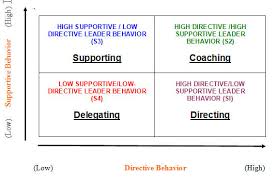
that need to be considered before making a decision on which one to use. Here is a brief overview of the most common types of alcohols:
Methanol, also known as wood alcohol, is the simplest type of alcohol. It is produced by the distillation of wood and other plant materials. Methanol is highly flammable and poisonous, so it is not used as a beverage. However, it can be used as a fuel or solvent.
Ethanol, also known as grain alcohol, is the type of alcohol found in beer, wine, and liquor. It is produced by the fermentation of sugars from grains or fruits. Ethanol is less poisonous than methanol but can still cause intoxication and liver damage if consumed in large amounts.
Isopropyl alcohol, also known as rubbing alcohol, is a type of denatured Alcohol that contains about 70% ethanol and 30% water. It is used as a disinfectant or cleaning agent. Isopropyl alcohol can cause intoxication but is less potent than ethanol.
Butyl alcohol, also known as n-butanol or normal butanol, is a clear liquid with a slightly sweet odor. Butyl alcohol has many uses including being
situational leadership theory
The situational leadership theory posits that the most effective style of leadership is contingent on the situation at hand. In other words, there is no one-size-fits-all approach to leadership; the best course of action depends on the specific situation.
The theory was first proposed by Paul Hersey and Kenneth H. Blanchard in their 1969 book Management of Organizational Behavior: Utilizing Human Resources. Since then, it has been further developed and refined by a number of scholars and practitioners.
There are three main types of situational leadership:
1. Directing: This style of leadership is appropriate when tasks are highly structured and employees are inexperienced or unskilled. The leader provides clear instructions and closely supervises employees to ensure that they are meeting expectations.
2. Coaching: This style of leadership is appropriate when tasks are somewhat structured and employees have some skills or experience. The leader provides guidance and support to employees as they work to complete the task at hand.
3. Delegating: This style of leadership is appropriate when tasks are unstructured and employees are experienced and skilled. The leader gives employees the autonomy to complete the task in their own way.
The key to successful situational leadership is being able to adapt your style to the specific situation at hand. The best leaders are those who can flexibly switch between different styles, depending on what the situation calls for.
ken blanchard situational leadership
ken blanchard situational leadership
Ken Blanchard is a well-known advocate of situational leadership. In situational leadership, the leader adapts their style to the situation at hand. There are four different types of situations that a leader may encounter:
1. Telling: The leader provides clear and direct instructions to followers. This is appropriate when followers are inexperienced or need to be closely supervised.
2. Selling: The leader persuades or motivates followers to buy into their vision. This is appropriate when followers are resistant or ambivalent about the change being proposed.
3. Participating: The leader involves followers in the decision-making process. This is appropriate when followers have the necessary skills and knowledge to contribute to the decision-making process.
4. Delegating: The leader gives followers responsibility for carrying out a task or plan. This is appropriate when followers are capable and motivated to take on additional responsibility.
